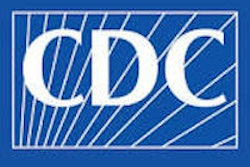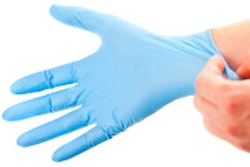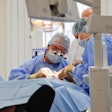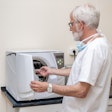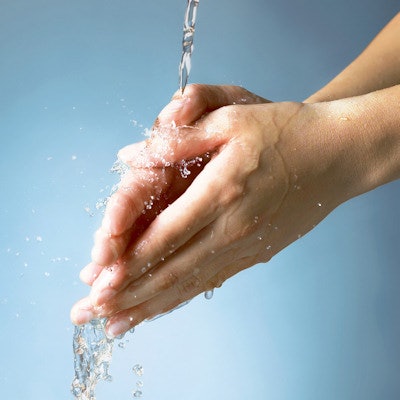
Newly trained dentists know how to wash their hands, right? Apparently not, according to the results of a new study. Investigators observed hand hygiene practices of postgraduate-year dentists working at a teaching hospital in general clinical practice and oral surgery, with the results suggesting sizable room for improvement.
Researchers monitored the hand-washing behavior of 37 postgraduate-year dentists during thousands of instances when hand-washing was required, including before or after contact with patients. They found that hand-washing compliance was low at 34.7%, although compliance and accuracy were much higher during oral surgery than general clinical practice work.
"More education and continuous monitoring are suggested to improve hand-washing compliance," wrote the authors, led by Hsin-Chung Cheng, PhD, DDS, a professor in the Taipei Medical University College of Oral Medicine in Taiwan (Journal of International Medical Research, January 15, 2019).
This is the way we wash our hands
Hand-washing and hand hygiene are essential for patient safety and preventing the transmission of healthcare-linked infections, although compliance with hand hygiene remains a problem in dentistry, according to previous studies.
Hand hygiene can vary by healthcare setting, and research on the hand hygiene compliance of dentists is limited. The study authors noted the lack of research on hand hygiene before and after clinical procedures and that this might be a risk factor for infection, even when hand hygiene compliance is high.
“More education and continuous monitoring are suggested to improve hand-washing compliance.”
To learn more about these issues, they examined the importance of monitoring hand hygiene and the frequency of accurate hand-hygiene performance in oral healthcare settings. They used direct observation, which is considered the gold standard for measuring hand-hygiene compliance.
Trained observers watched the hand-washing hygiene of 37 postgraduate-year dentists before and after they performed clinical procedures on the dental care unit of a university teaching hospital in Taiwan. Observations took place during three-hour sessions of one room with a single dental chair and the dental surgical unit from July through October 2012 and September through October 2013.
The observers judged each hand-hygiene opportunity for adherence and accuracy and categorized them into five types:
- Before patient contact
- Before using an instrument
- After patient contact
- Upon direct exposure to the patient's fluids
- Touching the area surrounding the patient
Successful completion of a hand-hygiene opportunity required the performance of hand-washing or hand-rubbing with alcohol. The investigators calculated hand-hygiene compliance as the number of hand hygiene episodes performed per the number of opportunities, and the accuracy rate as the percentage of hand-hygiene opportunities performed correctly.
The observers noted 16,597 hand hygiene opportunities, of which 16,441 occurred during general clinical practice, 138 during oral surgery, and 18 on the dental admission ward.
The postgraduate-year dentists did not adhere to proper hand hygiene in 65.3% of cases, and their overall accuracy was only 51.8%. The lowest adherence wasr before using an instrument at 26.2%, and the highest was 32.0% for touching the area surrounding the patient.
The compliance rate was 28% for hand-hygiene opportunities occurring during and after exposure to the patient (after contact with the patient and upon direct exposure to the patient's fluids). The accuracy percentage ranged from a low of 40.9% for direct exposure to the patient's fluids to 69.5% for before contact with the patient (see table below).
| Hand hygiene compliance & accuracy rate by hand-washing moment (n = 16,597) | |||
| Hand-washing moments | No. that did not adhere to proper hygiene (%) | No. that did adhere to proper hygiene (%) | Accuracy (%) |
| Before contact with the patient | 7,707 (71.4%) | 3,086 (28.6%) | 2,144 (69.5%) |
| Before using an instrument | 6,268 (73.8%) | 2,224 (26.2%) | 1,488 (66.9%) |
| After contact with the patient | 5,838 (71.6%) | 2,314 (28.4%) | 1,000 (43.2%) |
| Upon direct exposure to the patient's fluids | 5,252 (71.1%) | 2,136 (28.9%) | 874 (40.9%) |
| Touching the area surrounding the patient | 3,114 (68.0%) | 1,466 (32.0%) | 996 (67.9%) |
When the researchers divided hand-hygiene opportunities into general clinical practice and oral surgery, they found that hand hygiene adherence (34.2% versus 92.8%) and accuracy (51.0% versus 87.5%) were significantly lower for general clinical practice and each of the five categories compared with oral surgery (p < 0.0001 for all). Hand-washing accuracy should have been the same in the two settings because the same population was observed, the authors noted that.
"The high hand-washing accuracy rate in oral surgery services shows that young dentists are capable of carrying out hand hygiene correctly but are sometimes reluctant to use the correct method of hand-washing in general dental clinics," the authors wrote.
Reasons for this include the lower risk of infection in general dental clinics compared with oral surgery.
Not totally clean
The authors acknowledged that the study had some limitations:
- Monitoring took place during certain periods, but the time of day during clinical practice was not written down, which did not allow for examination of time or seasonal variations.
- They did not assess interrater reliability.
- Observers monitored at only one site, limiting applicability to other locations.
Nonetheless, they concluded that hand-washing compliance and accuracy rates were low in the population studied and highly dependent on the location of their work.
"Further research is required to investigate problems associated with hand hygiene and to design interventions to improve hand hygiene adherence in the dental healthcare setting," the authors concluded.





